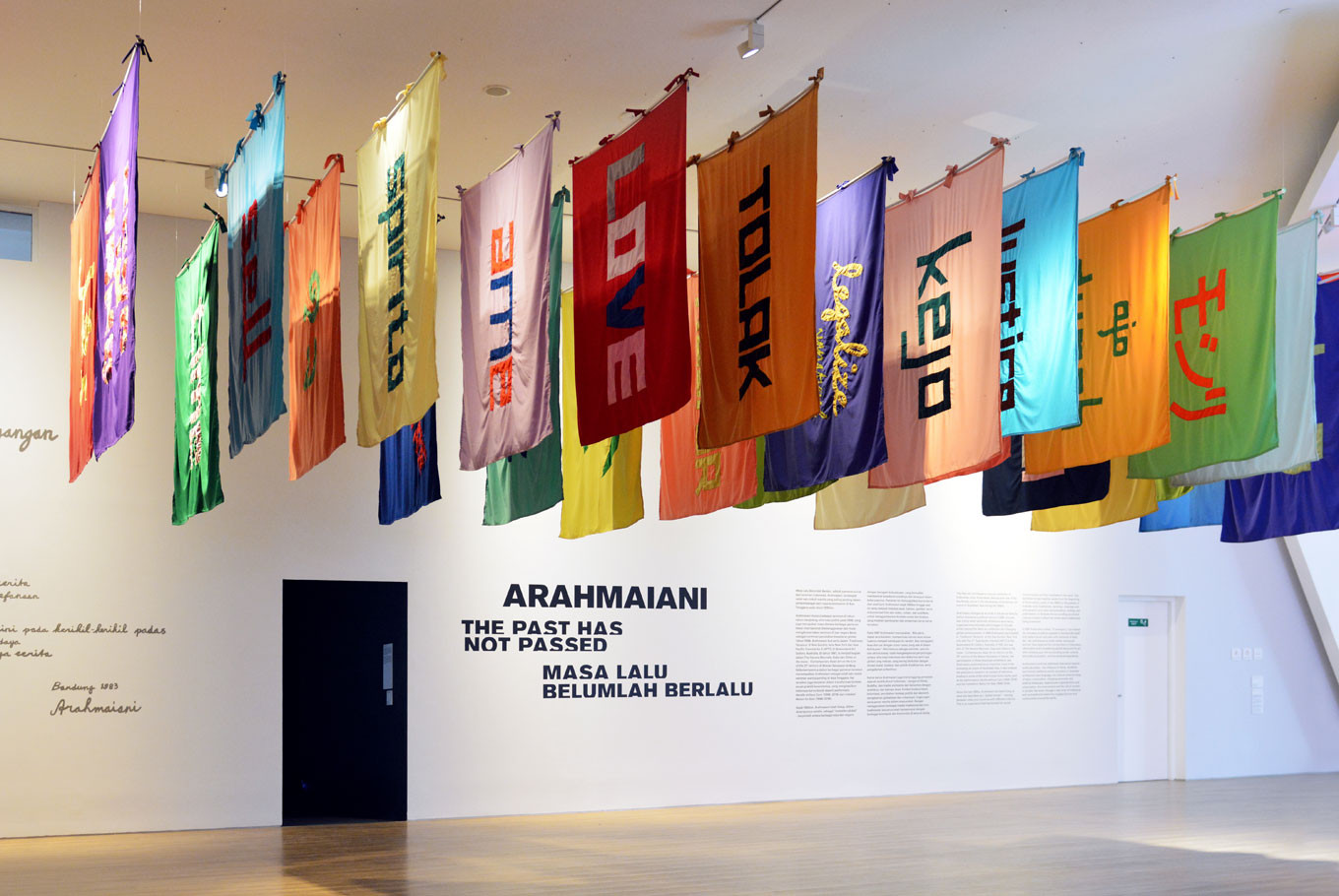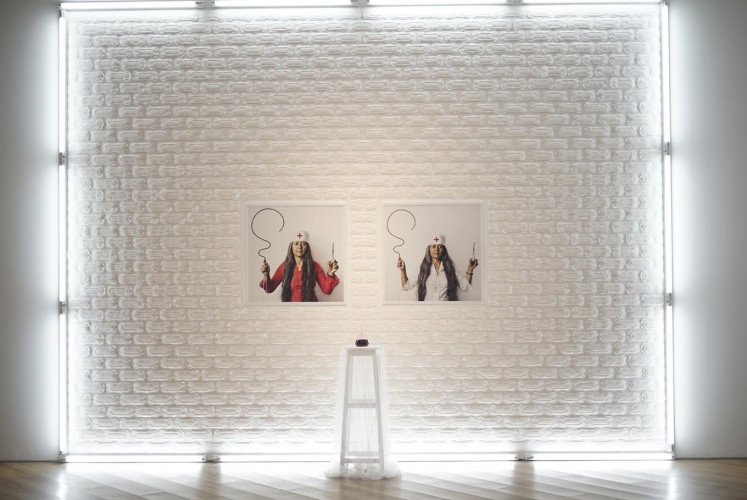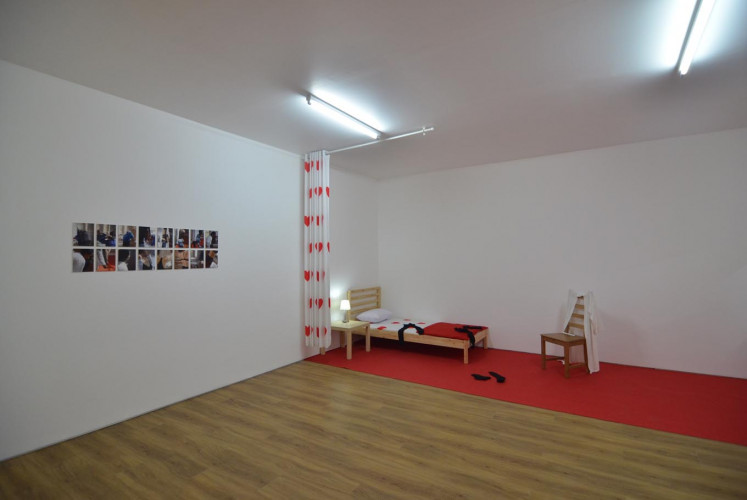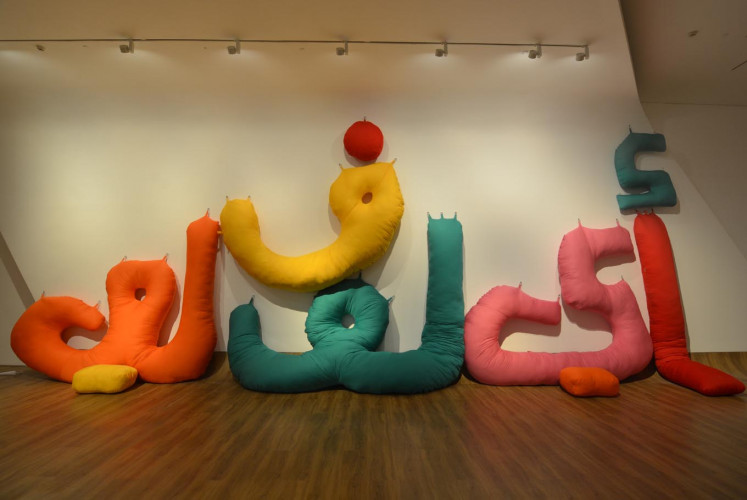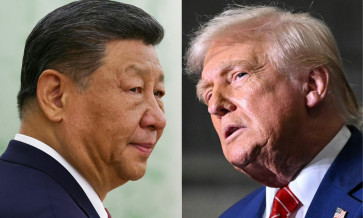Popular Reads
Top Results
Can't find what you're looking for?
View all search resultsPopular Reads
Top Results
Can't find what you're looking for?
View all search resultsGetting to know Arahmaiani through her 'wrath' at Museum MACAN
As a key female voice in the development of the contemporary art scene of Southeast Asia, Arahmaiani presents a survey exhibition called “The Past Has Not Passed”.
Change text size
Gift Premium Articles
to Anyone
I
f you think you’ve missed the main attractions of the latest exhibition at Museum of Modern and Contemporary Art in Nusantara (Museum MACAN), you actually haven’t.
While one of the program’s most anticipated performances concluded in mid-January, the exhibition still has a lot more to offer until March 10, mainly from the works of Indonesian artist Arahmaiani.
Among key female voices in the development of the contemporary art scene of Southeast Asia, Arahmaiani presents a survey exhibition called “The Past Has Not Passed”. This exhibition brings together more than 70 works of hers from the past 30 years, depicting the surrounding social and cultural context of the time her works were created. What’s unique in this exhibition is that most of the phenomenons she encountered while working on her pieces are still relevant to the current social situation, hence the name.
The artist’s strong focus on social activism, multiculturalism and the effects of globalization are strongly illustrated within her works displayed at Museum MACAN.
Nation for Sale (1996) by Arahmaiani (Courtesy of Museum MACAN/File)Nation for Sale(1996) might be one of the strongest, as it is regarded as one of her most iconic projects to date. The installation addresses Indonesia’s rapid development powered by large capital investment that comes with a high price: commodification of land. Her criticism of acute consumerism is shown through a collection of boxes containing guns, medicine, water and even soil.
Do Not Prevent the Fertility of the Mind (1997-2014-2018) by Arahmaiani (Courtesy of Museum MACAN/File)In Do Not Prevent the Fertility of the Mind(1997-2014-2018), Arahmaiani voices another social aspect important to her: feminism. The installation, which consists of a wall of female sanitary napkins, a red-blood liquid in a vial upon a stool, and two photographs of herself dressed in a nurse’s outfit while holding scissors and contraceptive devices shows how women shouldn’t only independently take control of their own physical fertility but also their minds.
11 June 2002 (2003) by Arahmaiani (Courtesy of Museum MACAN/File)Cultural context and religious values based on personal experiences are among the topics Arahmaiani presented. 11 June 2002(2003) tells the story of her overnight detainment by the United States immigration authority in Los Angeles in 2002 following the 9/11 tragedy. As a part of the detainment, a male officer was assigned to oversee her in her own room, resulting in great insecurity over lack of privacy and freedom. Not to mention in the practice of Islam, it is forbidden for unmarried men and women to share a room. The artist recreated the situation in her hotel room complete with personal objects such as stockings and underwear, alongside a series of photographs portraying the exploitation of freedom she experienced in the presence of the guard.
Read also: Museum MACAN named one of world’s greatest places
As a performance artist, it’s no wonder that some of Arahmaiani’s works require engagement with her audience. In Breaking Words, the artist invited visitors to each write one word meaningful to them on a plate. She then would smash them all, to symbolically show that those important things may one day be gone, but the meaningful value would stay if it is truly absorbed.
“Believe it or not, when the performance took place at Museum MACAN, there were two words that didn’t break despite being smashed: “keadilan (justice)” and “mother (ibu),” Nina Hidayat, the head of communications of Museum MACAN told The Jakarta Post. “Coincidence? It could be.”
Unfortunately, the powerful message was not completely accepted in one of Arahmaiani’s past exhibitions. An audience member in Kuala Lumpur wrote “Allah” on a plate and got offended by the smashing of the plate. The festival was then forced to shut down after complaints were made and police intervened.
I Love You (After Joseph Beuys Social Sculpture) (2009) by Arahmaiani (Courtesy of Museum MACAN/File)Similar misapprehension often times occurred in Arahmaiani’s exhibition journey. I Love You (After Joseph Beuys Social Sculpture) (2009) was once rejected to be displayed abroad because it contains Arabic letters. In fact, the gigantic colorful stuffed fabrics literally read “I Love You”, showing Arahmaiani’s attempts to promote peaceful values in Islam that had been degraded by the media especially after the event of 9/11.
Though more popular in performance and installation arts, Arahmaiani’s paintings are equally influential. Lingga-Yoni(1994) bears the elements of “lingga” and “yoni”, the symbols of virility and fertility often times found in Hinduism and Buddhism temples. In this painting, Arahmaiani combines the imagery of male and female sex organs with a series of Jawi alphabets that naturally look like Arabic letters. This illustration was once protested for blasphemy, sending a certain group of people into rage for mistaking it as verses from Holy Quran.
“Arahmaiani decided to leave Indonesia for a while, resulting in several changes of ownerships of Lingga-Yoni until finally Museum MACAN ‘discovered’ the painting and it became a part of the museum’s collection,” explained Nina.
Meanwhile, in Grey Paintings (2008-2010), visitors will discover the other side of the artist. In contrast to most of her works that express her ‘wrath’ towards her social and political surrounding, the series of paintings reflects on Arahmaiani’s constant process of self discovery, after more than a decade living life as a global nomad.
Alongside Arahmaiani, Museum MACAN has been presenting solo exhibitions of two more contemporary artists since mid-November 2018. “Seven Stories” by Lee Mingwei (Taiwanese/American), invites audience through seven major performances and participatory projects. His large-scale installation, “Guernica in Sand” painting that took 12 days to make, was destructed on the dusk of January 19th 2019, a moment after it was finished. This was a part of his performance, to show the world that nothing is eternal. The distorted version of the sand is left as is to be enjoyed throughout the rest of the exhibition.
Completing the exhibitions is “One Million Years” by On Kawara, a presentation that sees male and female volunteers alternately take turns reading out dates from Kawara’s multi-volume collection. (kes)
***
A travel writer and author of six backpacking travel guide books, all under his personal project called “Cheating the World”. Follow his travel stories and travel articles on www.cheatingtheworld.com or Instagram accounts @cheatingtheworld and @rifkyvicky.

